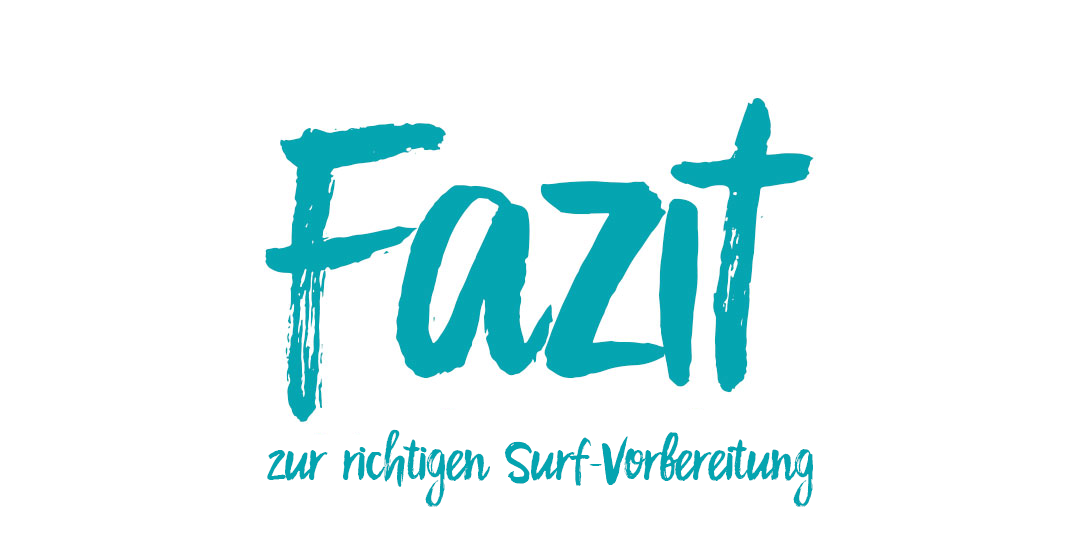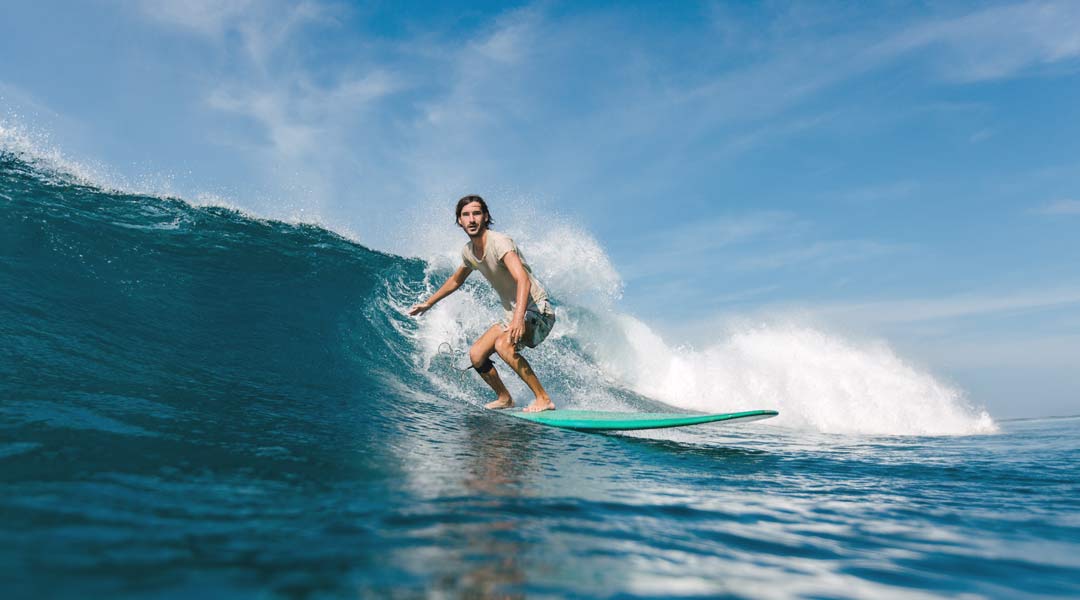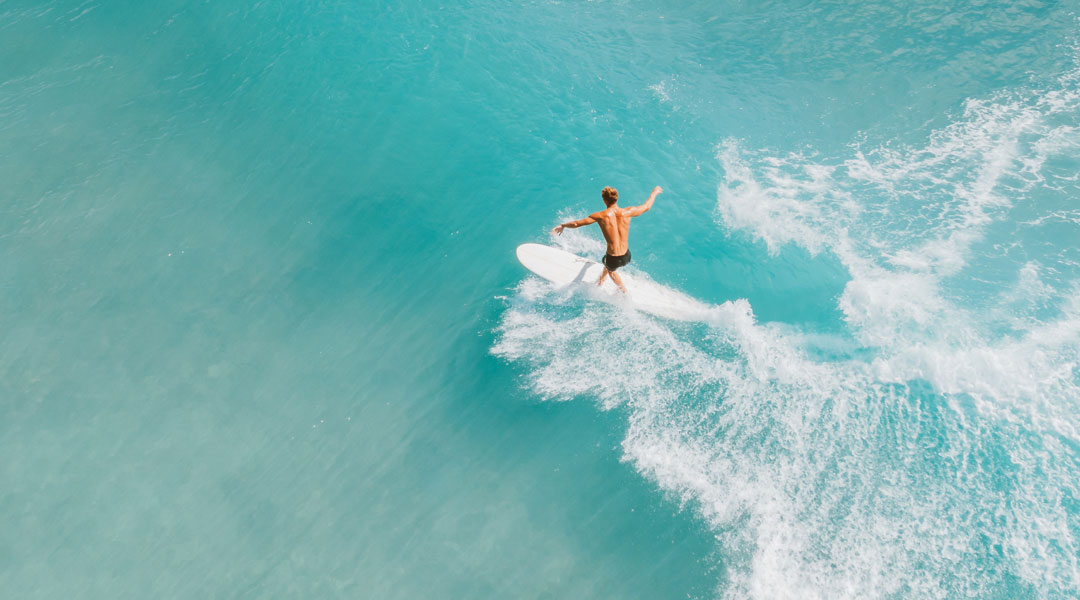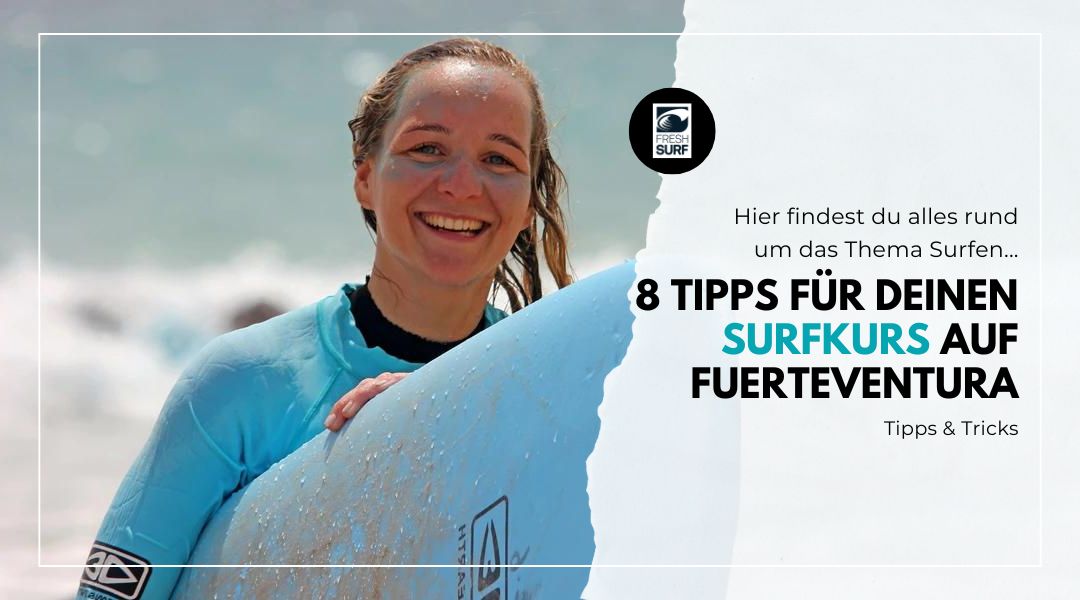12 tips to be well prepared for surfing – Preparing for your surfing vacation
Your next surf trip is fast approaching and you’re wondering what you can do to prepare for your surf vacation? The best way to prepare would of course be to spend as much time as possible on the water and surfing, but that might be difficult if you don’t live by the sea. But at the end of the day, it’s all about training your movements, fitness and coordination – everything you need for surfing. There are many options and fitness exercises you can do even without waves and ocean on your doorstep to prepare your body and mind for the challenges of the ocean.
Generally speaking, if you have a good level of fitness and are in good shape, you will probably get on much better in the water than a couch potato. If you exercise regularly, you should start training more intensively at least four to six weeks before your surf trip.
Here are our fitness tips for the time before your surfing vacation to take your fitness to the next level before your next surf trip.
We’ve put our tips on how to prepare for surfing into a small mini-series, with four tips per blog entry!
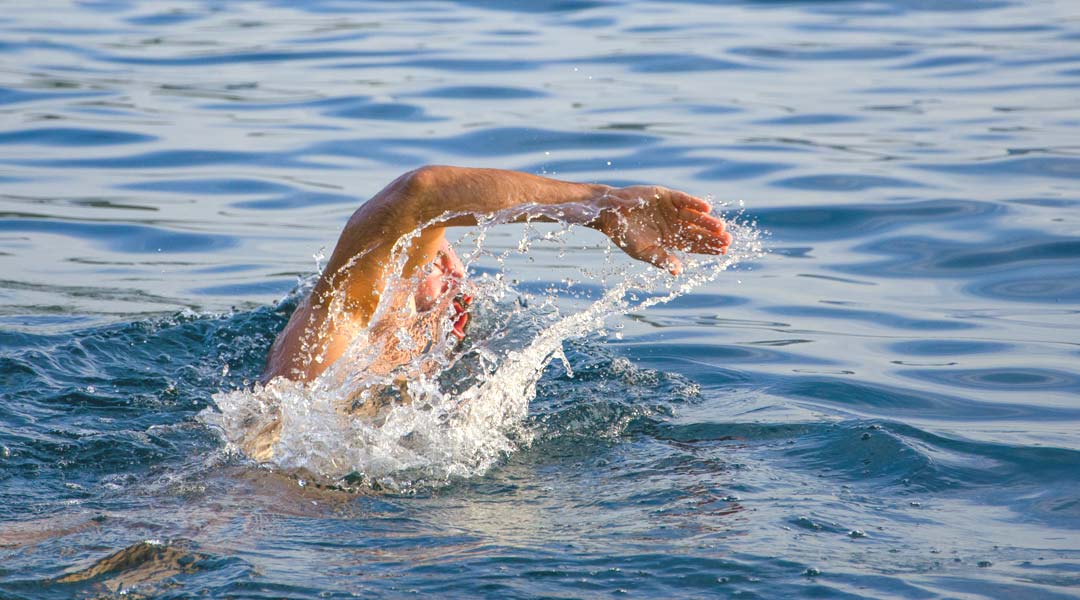
- Swimming to prepare for surfing
- Paddling as preparation for surfing
- Stretching exercises and yoga to prepare for surfing
- Strength training to prepare for surfing
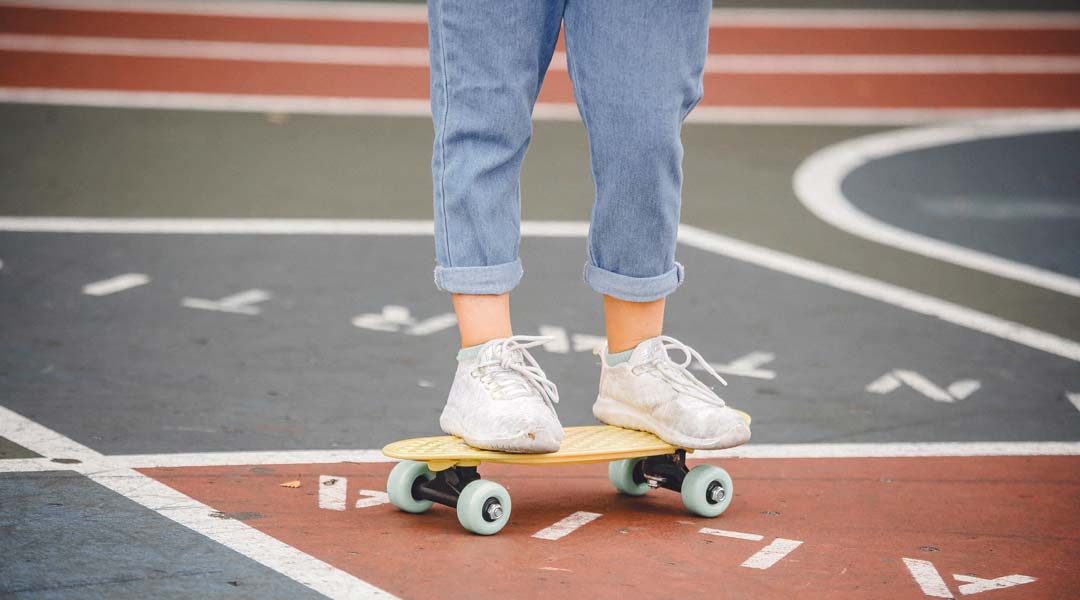
- Board sports to prepare for surfing
- Conditioning and endurance training to prepare for surfing
- Balance boards and slack line to prepare for surfing
- Surf tutorials to prepare you for surfing
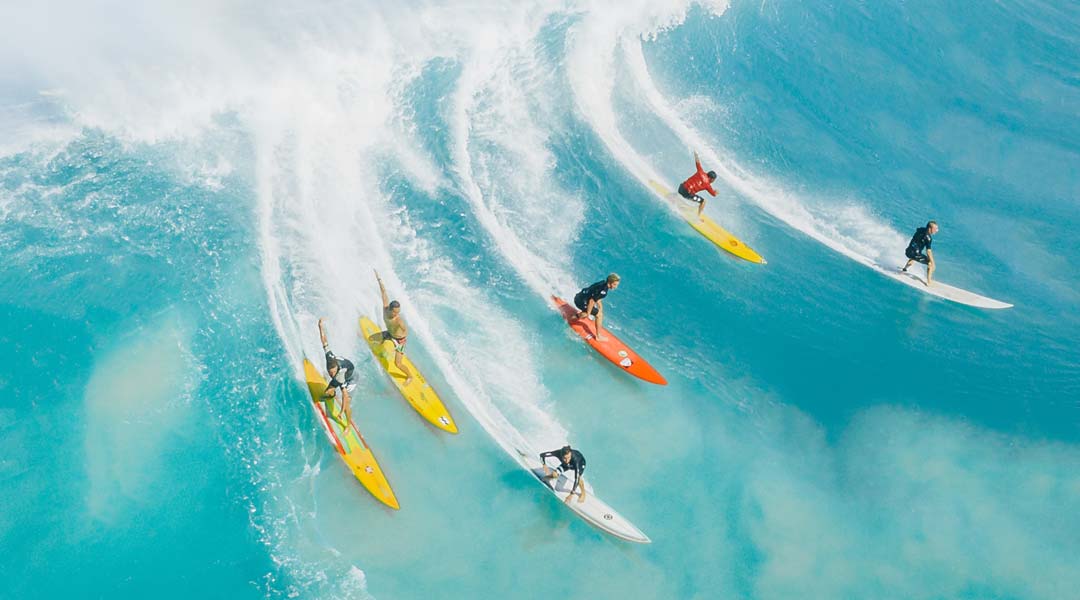
- Travel preparations in preparation for surfing
- View photos from your last surf vacation to prepare for surfing
- Surf technique training to prepare for your surfing vacation
- Body care in preparation for the next surf trip
1. swimming to prepare for surfing
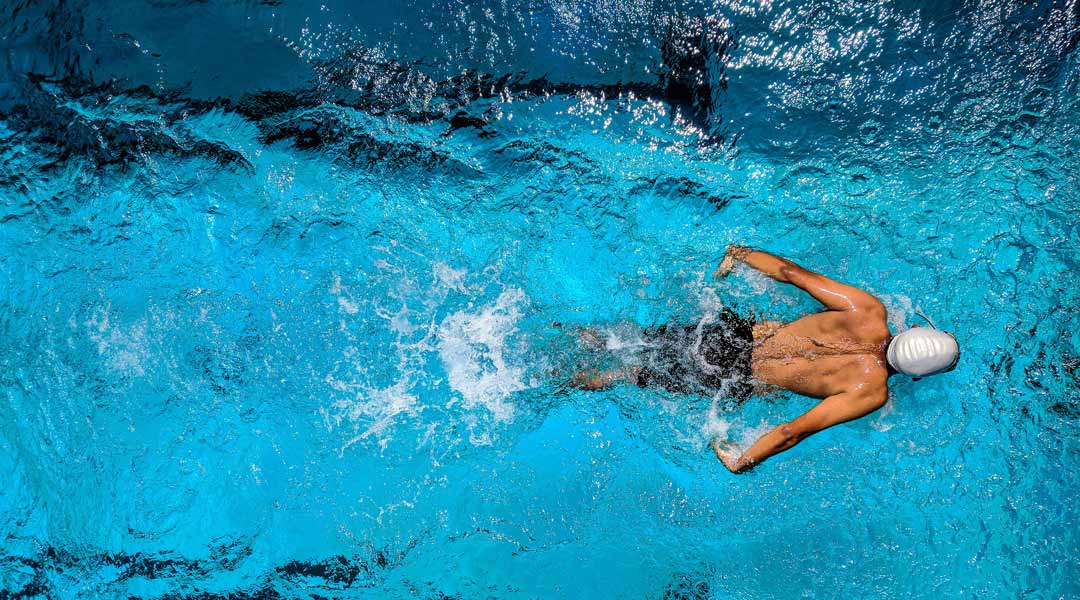
Why is swimming a good way to prepare for surfing?
Swimming uses your arm and back muscles in a similar way to surfing, as the movements of the two sports are almost identical. That’s why you should specifically strengthen your biceps, triceps, shoulders and back, especially your lower back, which is put under a lot of strain when surfing due to the hollow back you have to assume when paddling.
You can also improve your endurance considerably by swimming. Regular swimming training is therefore the best way to prepare for your next surf trip. At the beginning of your swimming training, you should start with breaststroke and then switch to the crawl. The speed should be increased slowly. This will also allow you to adjust your breathing to a higher speed so that you don’t immediately run out of breath.
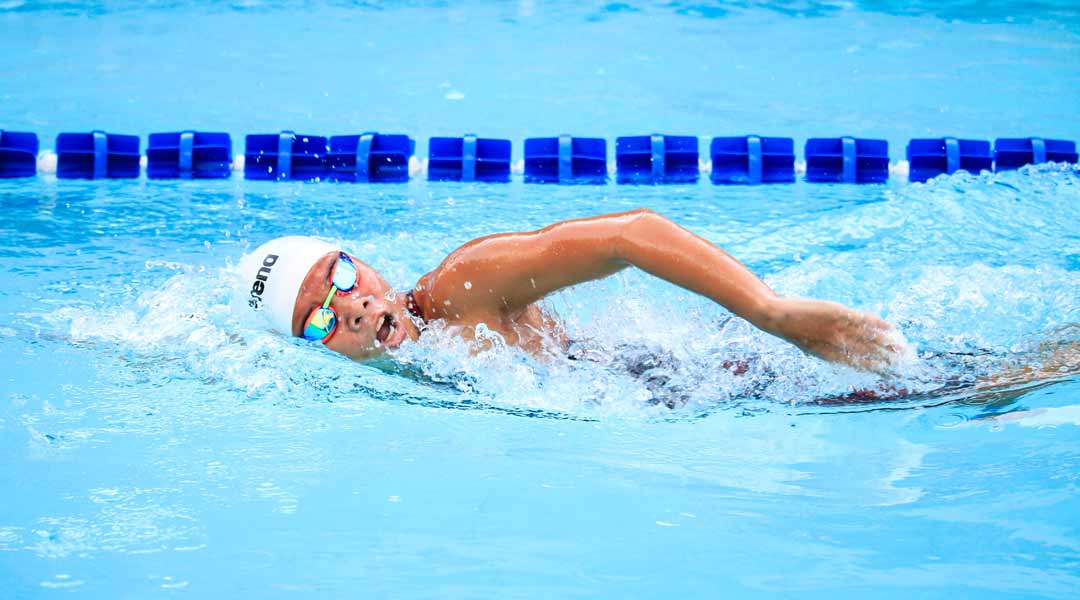
Here are a few tips on swimming training to prepare for surfing:
- Start small and then build up slowly. Build up a good level of fitness and slowly work your way up to a training distance of 1000m, for example. This is ideal as preparation for your surf trip.
- A workout of approx. 20-30 minutes is recommended. Do this two to three times a week and you’ll be well on your way.
- Spend enough time learning the right technique at the beginning. Focus on your footwork and train your breathing specifically. You can also incorporate diving exercises into your swimming training.
- Incorporate different swimming styles into your surf preparation training. For example, start with breaststroke and then switch to crawl. Slowly increase the speed and adapt your breathing to the increasing frequency.
Conclusion on swimming as preparation for the next surfing vacation
Swimming not only trains your endurance and important muscle groups, you will also feel more and more at one with the water! If you start slowly and work your way up, swimming is the perfect workout to prepare you for your next surfing vacation. So, off to the nearest swimming pool or outdoor pool! You can find even more tips on swimming here!
2. paddling as surf preparation for your next surf trip
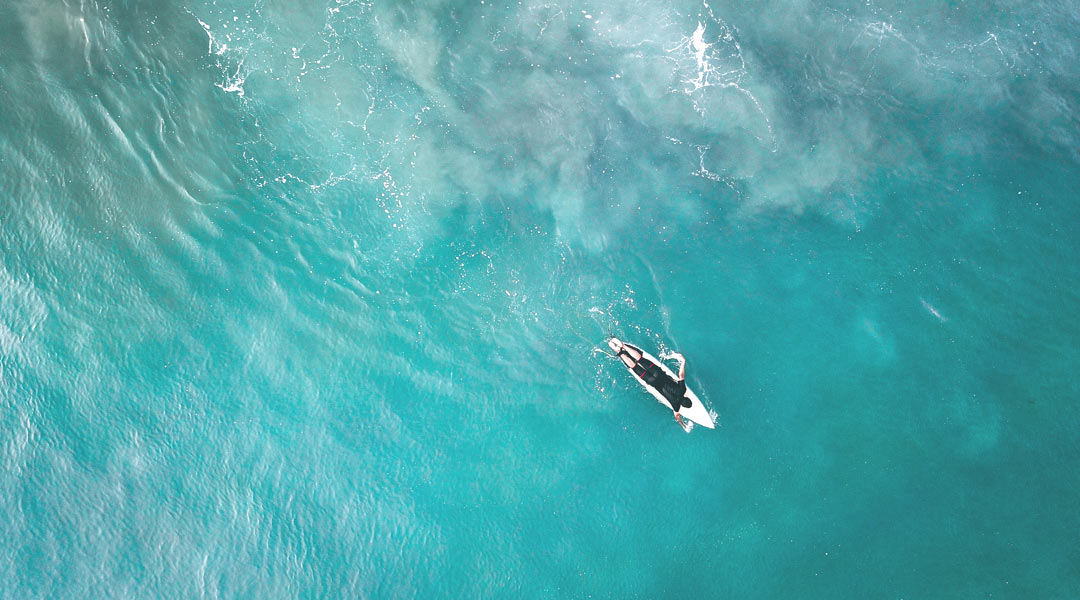
Why is paddling a good way to prepare for surfing?
To get more waves on your surfboard, you need to paddle quickly and effectively. To do this, you need better technique, assuming you have strength, stamina and board feel. With a good paddling technique, you can position yourself better in the line-up, surf longer sessions and really step on the gas at the crucial moment to catch the wave.
You can therefore simply take your surfboard and head to the nearest lake, canal or river to go paddling. This way you can refresh and improve your board feeling from your last surfing vacation.
Even if it might feel strange to turn up at the quarry pond with a wetsuit and surfboard and you’ll cause a bit of a stir: Don’t let it put you off – the success of preparing for surfing by paddling will be well worth it!
Here are some more tips on paddling
3. stretching exercises or yoga to prepare for your next surfing vacation
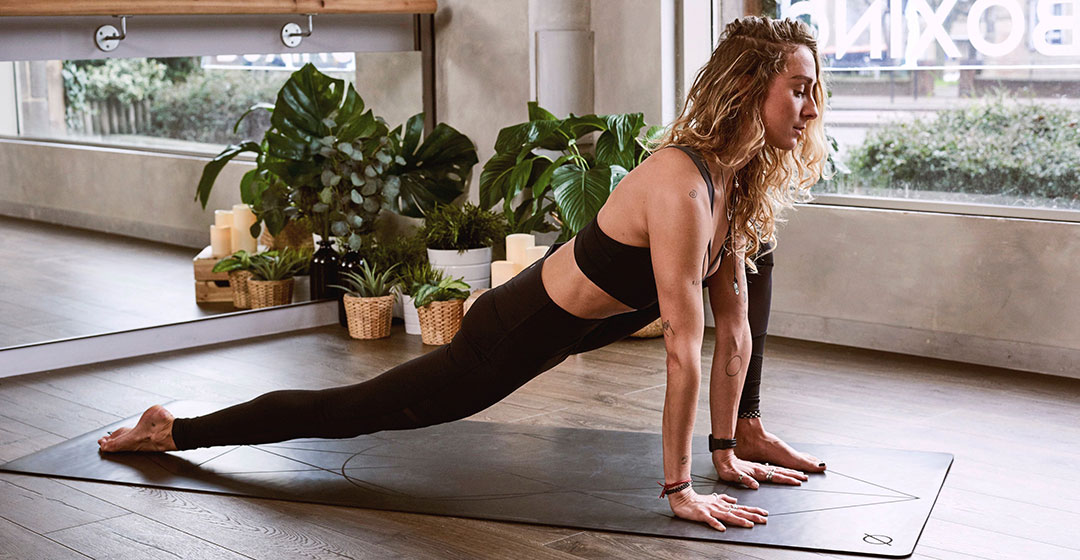
3. why is yoga great for surf preparation?
For many professional surfers, yoga and surfing go hand in hand to prepare for surfing. Yoga is the perfect complement to get you fit for your next surf trip. Yoga has a positive effect on your surfing and trains everything we need when learning to surf: Flexibility, strength, balance and concentration. In addition, yoga creates an inner balance that also shows on the outside. There are different styles of yoga. We recommend dynamic vinyasa flow yoga. This is all about strengthening exercises. In addition to dynamic yoga, you can of course also opt for relaxing yoga if that suits you better, or train your physical weak points (hip opening, shoulder strength, balance, etc.). Don’t take on too much at the beginning. In yoga, a few exercises performed consistently and correctly are better than too many at once.
If you can’t find any yoga classes in your area (yoga is more fun in a group at the beginning), you can google for online videos to watch at home. Here you can find some more tips and exercises on preparing for surfing with yoga.
4. strength training to prepare for surfing
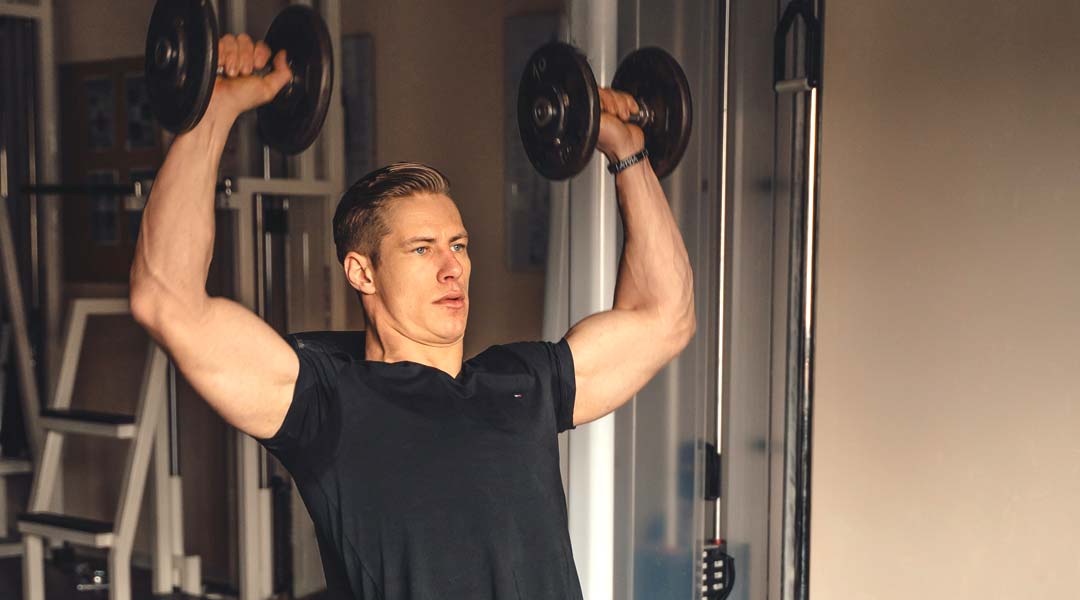
An extensive workout is essential to prepare for the next surf trip and the perfect wave. Surfers need a lot of stamina, strength, balance and coordination. This is the only way to enjoy surfing to the full. Dry exercises and strength training should therefore also be part of your training plan. You can do a few stabilization exercises and train specific muscle groups that you particularly need when surfing: Buttocks, arms, back and shoulders. For example, you can improve your balance with core muscle exercises. You can strengthen your shoulders with neck presses using dumbbells, for example, and your arms with overhead tricep presses. The important thing is to get the technique right and train with moderate weight. Don’t overdo it! A few other exercises for a surf preparation workout would be the “big four”: These basic exercises have the advantage that they are multi-joint exercises (i.e. at least two joints are involved in the exercise) and therefore train a variety of muscle groups at the same time.
Pull-ups or pull-ups:
Pull-ups train the upper back, biceps and shoulders. It’s best to do three sets of six to ten repetitions. We will go into this exercise in more detail in the section on training with your own body weight!
Bench press or bench press:
You can strengthen your chest and triceps with the bench press. Two to three sets of six to ten repetitions are recommended.
Squats (straight and lateral squats)
Squats not only train your legs, but also your butt, back and core muscles. Two to three sets of six to ten repetitions are ideal. We also go into this exercise in more detail below in the section on training with your own body weight!
Deadlifts or deadlifts
Strengthen your lower back with deadlifts. This also trains your bottom, legs and grip strength. Perform two to three sets of eight to ten repetitions. The right technique is essential for this exercise.
Strength training without weights
If you don’t feel like going to the gym and would rather train with your own body weight without weights, freeletics may be an option for you. Here it is particularly important to first learn the correct technique and then to increase the number of repetitions and speed in order to increase the speed of execution. Some good exercises are
Burpees to prepare for surfing
The burpee combines several fitness exercises into one fluid movement. It is a mixture of squat, push-up and stretch jump with hands behind the head.
Stand upright with your feet shoulder-width apart. Squat down and place your hands on the floor in front of your feet. Now shift your weight onto your arms and jump into a push-up position with both legs parallel. Do not bend at the hips in order to avoid a high cross. Make sure to tense your glutes, legs and abdomen. Perform a push-up, then pull your legs forward up to your feet in one movement into a squat position. Finally, do a stretch jump and return to the starting position. Now do it all over again!
Squats to prepare for surfing
As mentioned above, the squat is an exercise that uses your own body weight to train your lower body in particular. You can work with your own body weight, i.e. without additional resistance (“bodyweight squat”) or with weights such as dumbbells or kettlebells.
Stand parallel with your feet slightly wider than your shoulders and the tips of your toes pointing slightly outwards. Inhale, make a slight hollow back, bring your shoulder blades together and look upwards at a slight angle (but not at your neck!). Bend your knees and hips as if you were sitting on a chair. When straightening up, the pressure should be on your heels, keeping your toes on the floor at all times. Straighten up, but be aware of your hollow back during the entire movement. Once you have straightened up, actively push your pelvis forward and reach the end position.
Push ups (push-ups) as a surf preparation exercise
The push-up is an athletic self-weight exercise for strengthening various muscle groups. These are specifically the shoulder, arm and chest muscles. The stretched body is supported by the arms and the gaze is directed towards the floor.
Get into the push-up starting position, keeping your hands directly under your chest. It is important to tense your gluteal muscles. Pull your belly button slightly towards your spine. When lowering, try to bring the tip of your nose to the floor 10 cm in front of your hands. Get down to the floor and push your elbows all the way through as you come up. Beginners can also place their knees on the floor instead of their feet to make the exercise a little easier.
Pull ups (chin-ups) to prepare for surfing
The pull-up is a deadweight exercise in which the body is pulled up and down a horizontal bar (pull-up bar) by the back in cooperation with the arms. The pull-up is an exercise that works many muscle groups simultaneously, primarily the large back muscle. It is therefore referred to as a compound exercise.
Find a stable crossbar that can withstand your weight and hang from it with a firm grip – the closer your hands are together, the easier the pull-up will be. Pull yourself up over the bar with your chin and then lower your body back down in a controlled manner. If you are a beginner or your strength is decreasing, you can easily jump off with both legs to make the exercise easier. You can perform the pull-ups with an overhand grip (palms down) or underhand grip (palms up).
Plank (forearm support) to prepare for surfing
The forearm support is an athletic self-weight exercise that is part of functional back exercises. Used correctly, it strengthens a large part of the body, especially the front and rear core muscles.
To perform the plank, assume the push-up position but place your forearms on the floor. Don’t let your hips drop and tense your glutes, abdominal and thigh muscles. Don’t forget to breathe and try to hold the position for as long as possible.
Mountain Climber for surf preparation
The mountain climber is the ideal full-body exercise to get your whole body fit on the move. The exercise is not only perfect for getting your abs in shape, it also boosts your endurance and trains your shoulder, gluteal and leg muscles.
Take the starting position as for the push-up, then alternately pull your knees under your chest and back again. It is important to keep your hands under your chest, make sure that your hips remain stable and pull your belly button slightly towards your spine. As a variation, you can also try pulling your knees to the side of your body towards your elbows.
5. board sports: skateboarding / surf skateboarding / longboarding / snowboarding to prepare for surfing
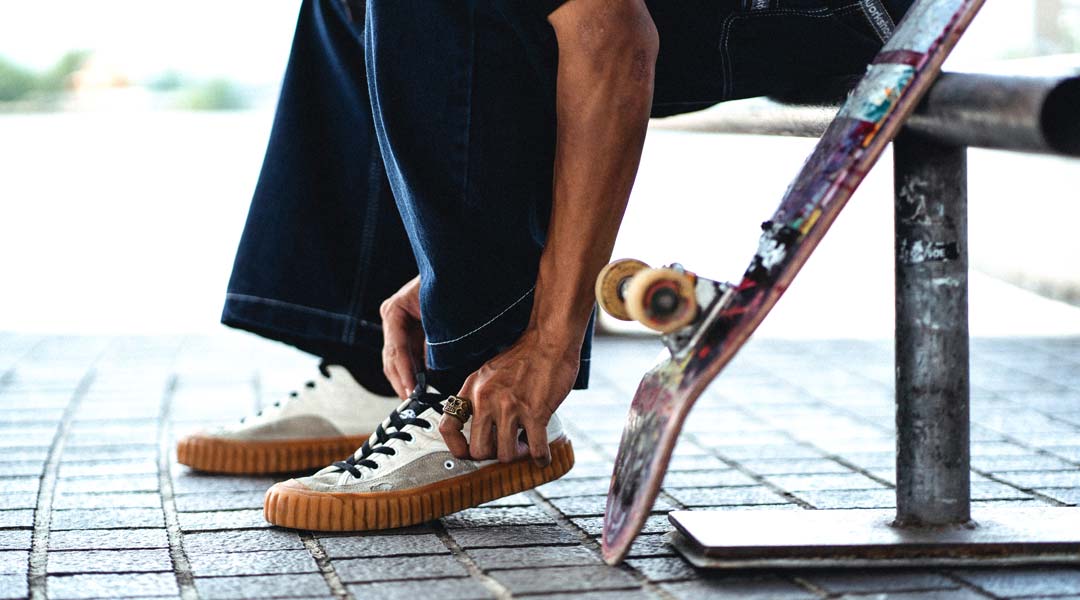
With a snowboard, longboard, skateboard or surf skateboard, you train your core, shoulder and leg muscles, improve your flexibility and take your surfing performance to a new level. You also work very well on your muscle memory. In the ocean, every wave is different. Especially when you are working on a maneuver, it can take ages before the next wave brings you similar conditions to your first wave. This significantly shortens the really quality time on the board. A board allows you to spend more time on the board and always in the same conditions. This allows you to work on your tricks through constant repetition, which in the long run will also settle into your movements. For beginners, for example, relaxed carving on a flat road or a square is enough: the weight shift from the toes to the heels or from one leg to the other is similar to the weight shift on the surfboard. This promotes balance and is essential for turns in the waves.
If you are a good snowboarder, skateboarder or wakeboarder, this unfortunately does not mean that you are also a good surfer. But practicing other board sports (also in preparation for learning to surf ) trains your coordination and body awareness. Each sport helps you to train different aspects. No matter what sport you do, it will help you learn to surf.
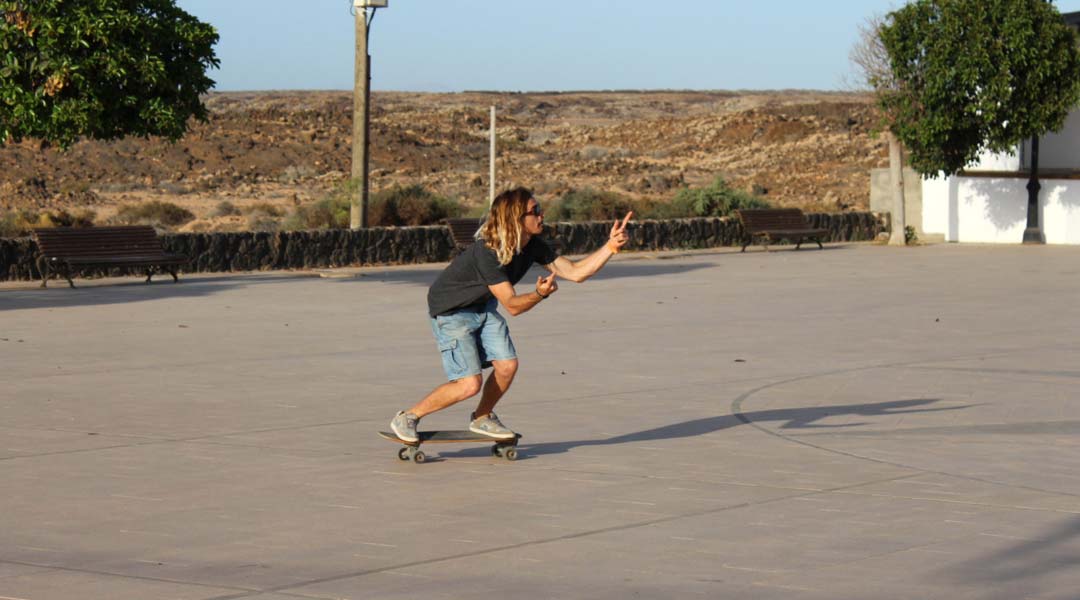
However, with a surf skateboard, which is designed to transfer the feeling of surfing to the street, you can significantly improve your surfing skills. Regardless of your surfing level, whether you are a beginner or an advanced surfer, with a surf skateboard you can work on your surfing technique. You experience the feeling of surfing on the street. With the surf skateboard, you can work on the following aspects of your surfing on the street:
Skateboarding for surfing gives you the stability you need to get a good take-off in all kinds of waves and keep you on the board better. Skateboarding, longboarding or carver surfing is therefore good for the following aspects:
- With surf skateboarding, you gain stability and can then stay on the board for longer.
- Skating trains your coordination, which gives you a better board feel for surfing.
- Skateboarding promotes an upright posture and a more upright position. You work against poor posture on the surfboard and will be able to surf in a more relaxed and relaxed manner.
- Surf skateboards improve your sense of balance for surfing on the water. You can stay on the surfboard longer and more easily and can already trim and turn your board by shifting your weight slightly.
- With surf skate training, you work on the right stance on the board. You’ll work against misalignments on the surfboard and can therefore stand safely on the surfboard.
- Surf skate training helps you to surf faster, more dynamically and with more control.
- You can perfect or change your style with skateboarding.
- Surf Skate Training makes it easier to identify and correct mistakes.
Your reward: A longer, more stable and better ride on the surfboard on the wave!
6. fitness and endurance training: running and jogging to prepare for surfing
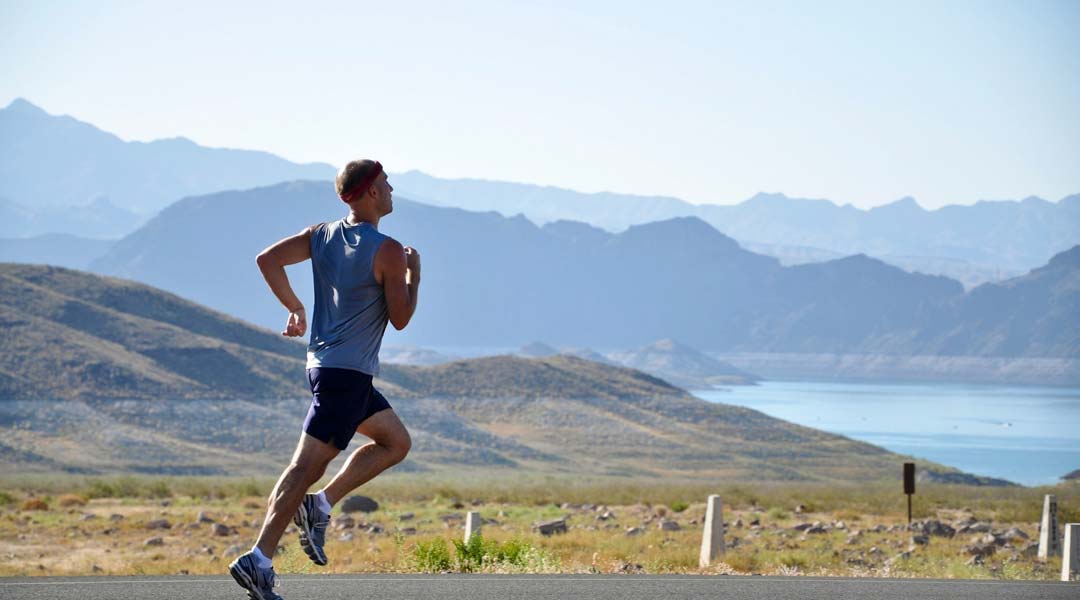
In general, it is of course a great advantage if you bring a good level of fitness with you on your surfing vacation. That’s why endurance sports such as jogging or cycling are always good preparation. If you are new to running or jogging, there are many guides on the internet on how to start running gently. Protect your joints, burn excess fat and get the most out of your body! Even though jogging helps you to work on your endurance, strengthen your cardiovascular system and build up resistance. You need all this to be able to stay in the water longer, paddle with more endurance, surf longer and therefore ride more waves.
Another side effect of running and jogging to prepare for surfing is strong legs, which are essentialfor surfing. What’s great is that you don’t need any equipment (apart from good shoes) and can do sporty surf preparation anywhere. As the strain of surfing in the water is rather dynamic, shorter tempo runs of around 30 minutes can be considered good preparation. Long endurance runs or half marathon preparation are not necessary. What is important is a good running technique to protect the knees and generate a lot of power from the hips. Trail runs, for example, are a good alternative or an extension of the running spectrum, which also train coordination and stability.
7. balance board and slackline to prepare for your next surfing vacation

The term “balance training” refers to exercises on unstable, wobbly surfaces. They are available to buy in the form of various balance trainers. Be it a balance top on which you can do squats, a Pezzi ball or other balance equipment. The wobbly surface stimulates deep-lying, stabilizing muscles – which tend to get bored on a flat surface. The classic here is definitely the IndoBoard. It trains balance and, with a little imagination, there are numerous exercises for training the legs. The price is quite high for a wooden board with a plastic roller, but there are various offshoots on the market that will certainly help you prepare for your next surfing vacation.
Balance training is used to improve body awareness and proprioception – in other words, to better assess the position, posture and movements of our body in space. We owe this to receptors in muscles and joints that influence our depth sensitivity and therefore constantly adapt and perfect the smallest movements – in everyday life and in sport. Balance training is therefore useful when preparing for surfing, as it trains coordination skills in order to react more quickly to changing environmental conditions – which, for example, makes the surfing style more explosive and reactions faster. On top of this, muscle stimulation contributes to injury prevention and rehabilitation.
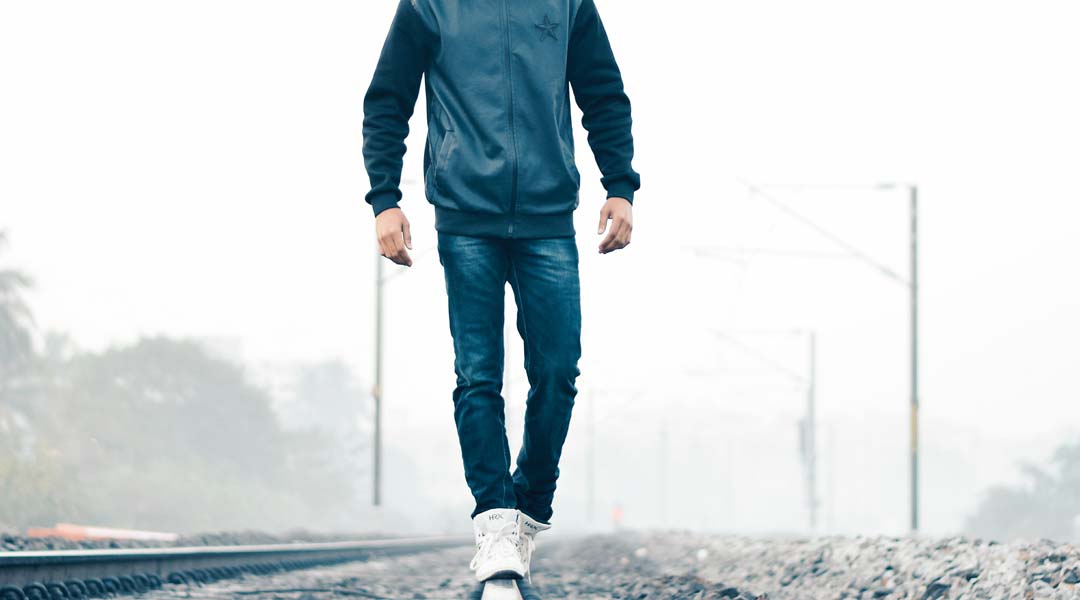
Another alternative to balance training for surfing is the slack line. It’s a great way to train your sense of balance and prevent corrections to surfing mistakes, as it involves quick, weight-shifting exercises for stabilization. In particular, you can practise the swing and stability for the top and bottom turn. One exercise, for example, is called surf the line. Here you start to swing with the line on the slack line as if you were surfing a river wave from left to right, for example.
8. watch surf tutorials to prepare for surfing
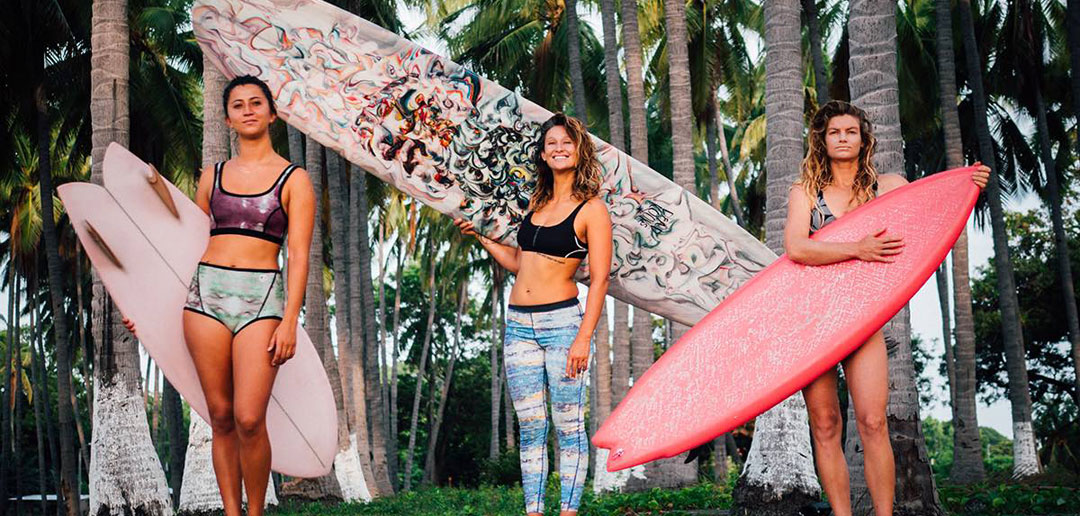
Surf tutorials are the most relaxed and coolest way to prepare for surfing. Online surf coaching is a great way to prepare yourself mentally and in theory for surfing. There are now countless great learning videos and surf films that are really fun to watch. The “How to Surf Tutorials” explain the most important elements of surfing techniques for beginners and advanced surfers. You get a good overview of some techniques and can develop your surfing skills faster. We would like to recommend the following series for surf preparation:
it is all about practice
How to get more waves and learn to surf better? You can find some great tips in the following video – at the end of the day: “Practice makes perfect!”
How to pop up on a surfboard
The take-off becomes easier with the right stand-up technique. The more you practise it, the faster and safer you will get up on the water later!
How to catch a green wave
How to have even more fun surfing green waves is beautifully explained and shown in this video!
15 intermediate tips
Once you’re an intermediate surfer, it’s often difficult to progress. You can find some great tips here!
9. travel preparation in preparation for surfing

With the travel preparations for your surf trip, you’ll already be emotionally invested in your surf trip and can thus maximize the anticipation. Your surf trip will definitely start with a lot of anticipation!
Research everything you can find about your destination, talk to surfer friends, explore surf forums, read travel guides and find out about the country and its people.
You can look for great accommodation, be it a surf camp or a hostel, a hotel or an apartment in your surf vacation destination. The pictures alone will put a smile on your face and transport your thoughts to foreign oceans and worlds. Once the longing has taken hold of you and you miss the smell of salt water, beach, sun, waves and surf wax, then it’s time to look for another surf vacation. As you can see, planning is a positive thing. What should you think about?
I will go into packing lists and other details in a separate blog post, but the most important things to prepare for your next surfing vacation are:
Ask yourself where you would like to learn to surf or improve your surfing? How long would you like to travel and what is the wave season like there? How long do you want to be on the road, what about jet-leg and how much safety is important to you? Do you want a concentrated load of adventure with foreign cultures, away from tourism with perhaps empty line-ups or would you prefer a destination that is already fully developed for tourism? You may need to stock your first-aid kit accordingly and find out about any necessary vaccinations.
When choosing your surfing destination, also take the climate into account and ask yourself whether you would prefer to surf in board shorts or a bikini or in a wetsuit – cold climates also have their own special charms. Find out which wave conditions prevail at the time you want to travel and which surf spots might work. You can find information about our surf spots here on Fuerteventura here!
10. look at photos from your last surf vacation to prepare for surfing
You can definitely add reminiscing and looking through photos to the travel preparations just mentioned. Remembering that feeling of happiness when you can completely switch off in the ocean and only the moment counts, when you can look back at pictures of the beach, the location, the food, etc. and relive these emotions, is a great way to get in the mood for your next surfing vacation.
Mental preparation begins on a small scale. Experience once again the feeling of being so incredibly happy and “stoked”, as surfers call it, and dream of your wave rides in the future.
11th technique training in preparation for the surf vacation

As already mentioned above, it is important to prepare yourself physically before your surfing vacation. If you haven’t been surfing for long, or have perhaps taken a longer break from surfing, then you can start to train some technical basics before your surf trip – in addition to all the fitness exercises you usually do. Reviewing your technique before your surf trip is an important aspect of surf preparation.
Fitness exercises for take-off and surfing
The take-off in particular should not be neglected. Once you’re back in the water and paddling into a wave, you may not have as much time to remember the sequence of movements. You should therefore practise the technique until it has become second nature to you. Once you’ve internalized this automatic take-off, you’ll have it down pat and it’s like riding a bike, because you won’t forget how to do it once you’ve mastered it. Of course you still have to strip off the rust on the spot to get back in, but that goes quickly. Use take-offs on dry land to get on the board faster. Try to do around 20 a day, 10 after getting up and 10 before going to bed or in front of the TV. It sounds a bit boring, but it’s great for refreshing your technique. And to name them again: Push-ups, push-ups and push-ups again, preferably so that your elbows are as close to your body as possible, this is the best way to simulate the take-off situation.
12. your body is your capital – take care of your body – the right nutrition to prepare for surfing

In addition to mental and emotional preparation, you also need to pay a little attention to looking after your body, the temple of your soul, as well as your fitness. There’s no denying that surfing certainly has a little (sometimes more) to do with body cult. People who exercise regularly usually have well-built bodies and like to show them off when practicing their sport. Surfers are no different, and as you’ve probably noticed recently, surfing is also becoming increasingly interesting for the advertising industry. On the beaches of California, for example, there is a veritable contest of appearances. But the best surfer is not automatically the most beautiful.
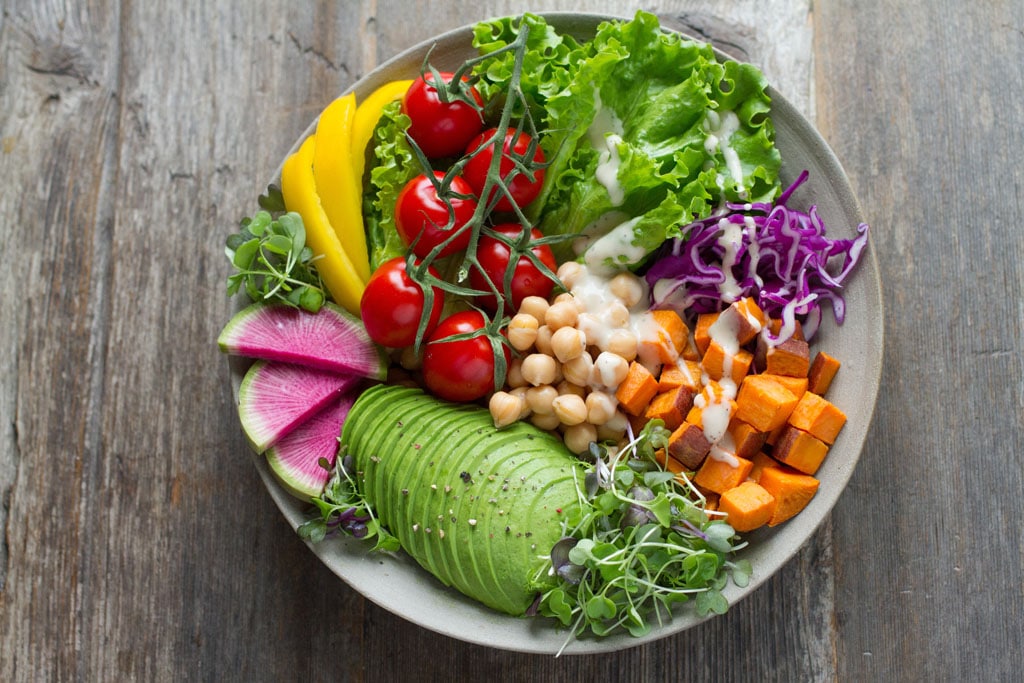
In Europe, flaunting your body is not as exaggerated as it is in America, but you will notice that the longer you surf and do sports, the more comfortable you will feel in your body. Sometimes a nice bikini or a new pair of board shorts can give you a little extra motivation. Treat your body with care. As well as showering and applying cream every day, a massage or two can prevent and relieve tension. Treat yourself to delicious and healthy food of high quality and eat sustainably and regionally. Try to avoid fast food and too much sugar, but you know that yourself and I certainly don’t need to remind you that it also pays off when learning to surf in a surf course if you are physically healthy and able to switch quickly between concentration and relaxation.
If you are not yet familiar with the topic of meditation, this is certainly worth thinking about, as practising meditation can be very helpful in the water. Relaxation and breathing techniques are extremely important for learning to surf. Hardly any professional surfer today can do without mental training. Make sure you’re feeling good and can start your surfing vacation feeling strong and full of positive energy. Leave stress, worries and negative thoughts at home or try to block them out while surfing. You’ll notice the difference!
As we have seen, fitness, strength, balance and coordination are the be-all and end-all of surf preparation. Ideally, several sports should be on your training program. Swimming trains your endurance as well as all the muscles you need for surfing. If, on the other hand, you want to focus on fitness, regular running training is just right for you. Targeted muscle training and honing your paddling technique in the lake or on the river will give you the strength you need on the surfboard, while yoga will help you work on your inner attitude and balance, making you feel balanced on the outside. This will also improve your flexibility and body tension.
You’ve done the workouts, steeled your body a little, prepared it optimally with yoga and fitness training? You’ve put your body through a lot of stress, now take some time for stretching and mobility exercises. Always leave enough time for regeneration between training sessions. If you start training early, you should modify individual exercises or training elements to give your body new training stimuli. Pay attention to your diet and get in the mood for your surfing vacation. With these tips, you’ll be well prepared for your next surf trip. Maybe it will take you to Fuerteventura, we would be delighted to get to know you.
We hope you have fun and enjoy trying out our suggestions for preparing for surfing!










